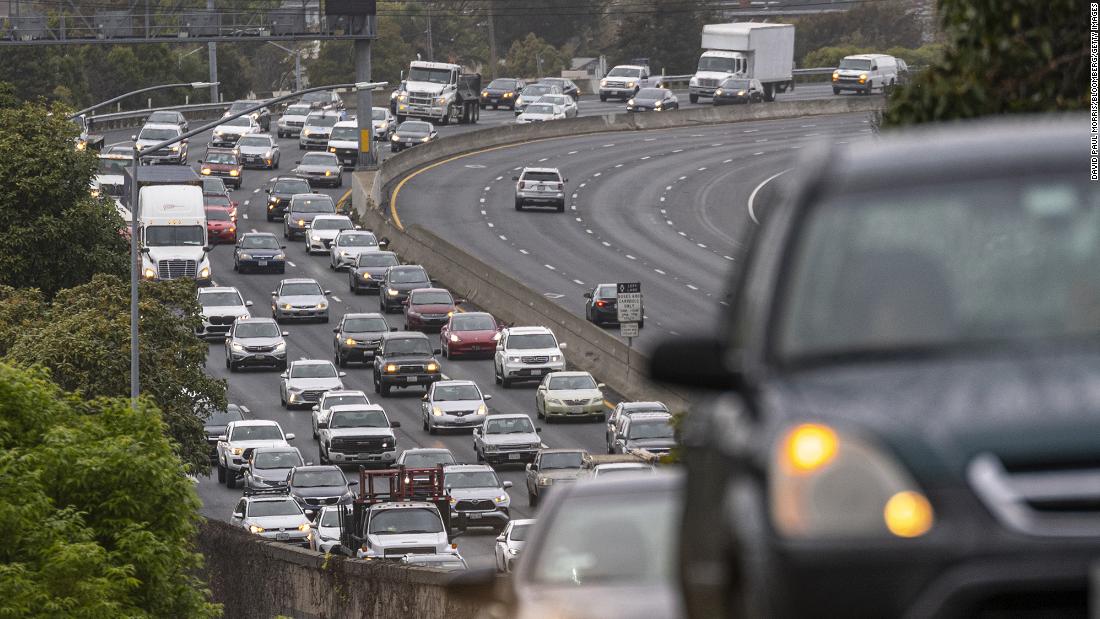Gasoline reaches record price in the United States 1:02
(CNN Business) ––
The Russian invasion of Ukraine is one of the main reasons that drivers in the United States now pay a record price for gasoline.
But it's not the only motive.
Russia - Ukraine War: breaking news, news and the humanitarian crisis due to the invasion
Numerous factors have added up to push the price of gasoline to a new high: it reached $4.25 per gallon of regular gasoline, according to the AAA survey on Wednesday.
Gasoline prices were even expected to break the $4 a gallon mark for the first time since 2008, with or without war or economic sanctions imposed in Eastern Europe.
Top 5 buyers of Russian oil 0:57
Now, with so many factors at play at the time, drivers should be prepared to pay an uncomfortably high price for gas… at least until Labor Day.
Prices could easily reach $4.50 a gallon before they begin to decline.
Furthermore, a national average of $5 per gallon is not out of the question.
This is what is behind the record increase in gasoline prices.
advertising
Russia's invasion of Ukraine
Russia is one of the largest oil exporters on the planet.
In December, it shipped nearly 8 million barrels of oil and other derivatives to world markets.
Five million of that total were crude oil.
But, very little of that made it to the United States.
Europe got 60% of the oil and 20% went to China, in 2021. But, the price of oil is traded on world commodity markets, so the loss of Russian oil affects oil prices around the world. world, no matter where it is used.
Concerns about the impact on global markets led Western nations to initially exempt Russian oil and natural gas from sanctions they imposed to protest the invasion.
You can still find 'cheap' gas in the US, if you know where to look
Despite that exception, much of Russia's oil is running out of sale on global markets.
Traders are reluctant to bid for him when it's not clear a deal can be struck, given sanctions on the Russian banking system.
There are also difficulties in finding tankers capable or willing to call at Russian ports.
This has resulted in a de facto ban on Russian oil from global markets.
And therefore, investors price crude oil as if the country's supply were not available.
On Tuesday, the United States announced a formal ban on all energy imports from Russia.
The UK government also said it will phase out Russian oil imports by the end of 2022 and explore ways to end natural gas imports.
There is growing political pressure on the rest of Europe to join in a formal ban on Russian oil.
This country supplies about 27% of the oil imports of the 27 nations of the European Union.
Biden prohibits energy imports from Russia to the US
While the price of oil rose a bit due to moves by the US and Britain, a ban from Europe could push global prices even higher.
Precisely, due to concerns that the restriction will remain indefinitely.
Even when the fighting in Ukraine ends.
Oil is typically traded as delivery-linked futures.
The price of a barrel of Brent crude, the closely watched benchmark used in Europe, closed at $123.21 on Monday.
Which represents 27% more than the start of the invasion, just 13 days ago.
West Texas Intermediary oil, the US benchmark, closed at $119.40 a barrel on Monday, up 30% from the same period.
Less oil and gasoline from other sources hit the price
Who would replace Russia in the supply of oil?
4:15
When pandemic-related stay-at-home orders around the world plunged demand for oil in the spring of 2020, its price plummeted and it briefly traded negative.
OPEC and its allies, including Russia, have agreed to cut output as a way to support prices.
Even as demand returned earlier than expected, they kept production targets low.
American oil companies don't follow those kinds of nationally mandated production targets.
But they have been reluctant or unable to resume oil production at pre-pandemic levels, amid concerns about the prospect of tougher environmental rules that could reduce future demand.
Many of those stricter rules have been relaxed or not signed into law.
ANALYSIS |
Record US gas prices feel like a slap in the face and more to come
“The Biden administration is suddenly interested in more drilling, not less,” said Robert McNally, president of the consulting firm Rapidan Energy Group.
"People are more worried about high oil prices than anything else," he explained.
It takes time to increase production.
Especially when oil companies face the same supply chain and hiring challenges as thousands of other American companies.
"They can't find people or equipment," McNally added.
"It's not that they're available at a higher price. They're just not available."
The price of oil, at its highest level since 2008 0:58
Overall, oil stocks have underperformed the broader market for the past two years, at least until the recent price surge.
Oil company executives wanted to redirect cash into share buybacks and other ways to help their share price rather than increase production.
"Oil and gas companies don't want to drill any more," said Pavel Molchanov, an analyst at Raymond James.
“They are under pressure from the financial community to pay more dividends, to do more share buybacks instead of the proverbial 'drill, drill,' which is the way they would have done things 10 years ago. Corporate strategy has fundamentally changed. ", full.
Gasoline prices in the United States reach a record: US $ 4.14 per gallon
Not only is oil production lagging behind pre-pandemic levels, there is also less refining capacity in the US Today, about 1 million fewer barrels of oil per day are available to be broken down into gasoline, diesel , jet fuel and other petroleum products.
State and federal environmental regulations are prompting some refiners to switch from oil to lower-carbon, renewable fuels.
And some companies are shutting down older refineries, rather than spend the money it would cost to keep them running.
Especially with massive new refineries opening overseas in Asia, the Middle East and Africa in 2023.
And major US refineries have yet to return to full capacity after two were damaged by hurricanes last year and another by an explosion.
Strong demand for gasoline
Why would banning Russian oil be counterproductive?
1:32
The record recovery of jobs in 2021 and the strongest economic growth since 1984 combined to fuel the rebound in driving.
As well as the repressed demand for travel after the first year of the pandemic.
Regained jobs have remained strong so far in 2022. And as many employees who worked from home for much of the last two years return to the office, demand is getting another boost.
"The jobs numbers have been pretty impressive and a lot of [people] will be driving to work somewhere," said Tom Kloza, global head of energy analysis at the Oil Price Information Service.
"There will also be more people not working remotely compared to last year or even last month. I don't know how to put a number on that, but demand will surely increase."
ANALYSIS |
Biden blames Putin for the increase in gasoline prices, another of the problems of the Democrats
The end of the wave of the omicron variant of the new coronavirus and the removal of many restrictions due to covid-19 is encouraging people to leave the house for more shopping, entertainment and travel.
Commutes in the United States in passenger vehicles have increased 25% since the beginning of this year, according to the mobility research firm Inrix.
There may not be as many commutes as before the pandemic.
Many of those who plan to return to the office will only be there three or four days a week, instead of five.
The total number of jobs is still slightly below 2019 levels.
But there will be periods, most likely this summer, when there will be more demand for gasoline than during comparable times before the pandemic, Kloza predicts.
Tight supplies and strong demand are likely to push prices above $4, even without the current disruption caused by the war.
"Even before Ukraine, I expected him to break records," Kloza said.
"Now it's a question of when we will beat it," she added.
CNN's Gregory Wallace contributed to this report
Russian invasion of UkraineOil














